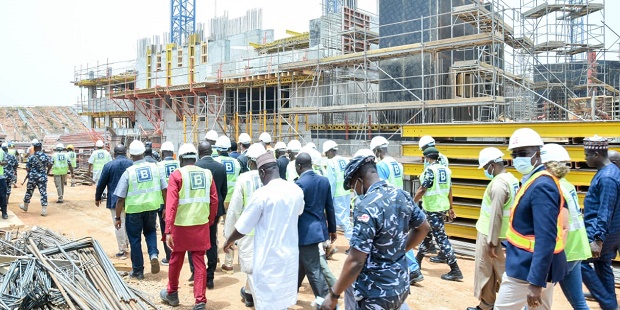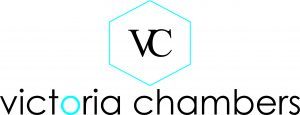
“If you submitted a proposal/bid in the 2020 process, please go to the NGFCP portal and do the Status Validation process”, the regulator told a group of American companies at an online seminar.
The Nigerian Gas Flare Commerialisation Programme 2022 (NGFCP 2022) is derived from a legal framework on flare gas reduction -The Flare Gas Reduction (Prevention of Waste and Pollution) Regulation- signed by President Muhammadu Buhari in 2018, which led to government takeover of gas flare sites on producing oil/gas fields with lack of/non implementation of gas flares out project. That regulation is now part of the Petroleum Industry Act on 2021.
Submission due date for the Statement of Qualification (SOQ) is November 28, 2022. Interested participants are expected to have registered on the portal and made SOQ submissions for eligibility to participate in the bid process by that date.
The NGFCP is expected to be completed in Q1 2023. The Programme design is for small scale modular flare capture equipment that are readily available and easily deployed, hence the Commission.

The Department of Petroleum Resources, the forerunner of the NUPRC, had commenced a bid process of flare gas sites in 2020. But the programme stalled. The NGFCP 2022 is rolling that previous process into this one. Parties who previously participated in the Flare Gas Commercialization Programme stand prequalified as Existing Applicants, subject to provisions of Section 3.6 of the request for qualification (RFQ) for the NGFCP 2022. “Existing Applicants shall remain prequalified subject to validation of updated documents. If the Existing Applicant is a consortium, any change in the composition or status of the consortium invalidates its prequalification status. Kindly note that Existing Applicants are exempt from payment of associated fees with respect to SOQ submission.” Excerpts from the RFQ.
“The flare forecast data that will be provided are underpinned by the Field Development Plan and Work Programme of the producers” the NUPRC responded repeatedly. “Technical due diligence on the sites on offer from historical production profile and the current field development strategy provides a reasonable basis to uphold the credibility of forecast”.
At the webinar attended by over 75 American companies, and jointly organized by the NUPRC and the United States Commercial Service in Nigeria, the regulator explained that 47 gas flare sites were on offer with a total potential output of about 250Milion standard cubic feet of gas per day guaranteed for five years. 14 of these sites can deliver hbetween 0.5 to 2Million standard cubic feet per day (MMscf/d); 19 sites can do 2.1 to 5MMscf/d; nine (9) can produce between 5.1 and 10MMscf/d and five flare sites can produce over 10MMscf/d.
25 (or 53%) of the flare sites are located on land; eight (8) in swamp; 13 in shallow water and one in deepwater.
The NGFCP 2022 seeks small/mid-scale modular technologies and its unique features includes ease of deployment, scalability, mobility, and off-theshelf availability including: • Mini/mid-scale LNG, • Modular LPG facility, • modular methanol/ammonia plant, • Gas-to-liquids facility, • Virtual pipeline solutions. The proposed solution(s) must cater for the full stream of the flare gas composition
The NUPRC fielded a range of questions from the participants, including whether there was a comprehensive gas analysis of the flare gas; if operators in Nigeria need to recover LNG from flare gas at stranded wells or wells that aren’t located near a processing plant and the minimum technical and financial requirements to participate in the bid.
“Gas composition is part of the flare dataset which will be made available in the data room during the Request for Proposal (RFP) phase”, NUPRC staff explained. “Our typical flare gas composition shows methane content of 70-90% which makes the sites amenable to mini-LNG deployments. Many of the flare sites are not necessarily connected to pipeline infrastructure”, they said, and added that basic (financial and technical) requirements are provided in the Request for Qualification (RFQ) and detailed information will be enumerated in the RFP when issued.
The NUPRC says there are no base formula for license fees rather there are fixed fees which are categorized based on range of volumes.
Pricing is always a key issue in gas offtake. So, it wasn’t surprising that questions were raised about whether any additional flare gas produced by the field above the licensed quantity may be priced at Henry Hub. To which the NUPRC responded: “If available, additional flare gas offtake by Flare Gas Buyer (FGB) over and above the contracted flare volume will be priced at the bid price offered by the FGB as contained in the Gas Sales Agreement (GSA)”.
The NUPRC ventured that it would “implement a streamlined regulatory licensing and permitting processes to facilitate project development”. It promised that Flare is made available under the NGFCP to a Flare Gas Buyer on an “As is Where is” basis. “The Commission shall exercise best endeavor to ensure that the forecasted quantity is made available by the producers”.
Any carbon credit accruable, the NUPRC explained, will be managed in line with the established protocol on carbon credit.
The NUPRC also told the participants that “qualified Applicants who have demonstrated sufficient commitment to progress with the bid process by participating in the RFP phase will be introduced to the producers.
One recurring issue is What if the operator stops producing for whatever reason, or the production decreases significantly?
This is the point that is often made by oilfield producers, some of who argue that (1) reservoir depletion is not always straight forward (2) gas flares do not happen in projects where there are robust economics of offtake on the ground, in which case the producer himself would have snapped up the opportunity.
“The flare forecast data that will be provided are underpinned by the Field Development Plan and Work Programme of the producers” the NUPRC responded repeatedly. “Technical due diligence on the sites on offer from historical production profile and the current field development strategy provides a reasonable basis to uphold the credibility of forecast”.
Considering that security issues in the Niger Delta, Nigeria’s hydrocarbon producing region, has dominated the headlines of recent, it was a little surprising that questions around t it did not vigorously come up, but they did come up. “Our Nigerian partners in other projects in the Deltas have refused to move forward because of this”, one participant pointed out. The NUPRC’s explanation was that the government was “committed to tackling the issue and as such major projects in oil and gas are currently in execution within the region”.
So, “are gas processing equipment needed for this project”?, someone wanted to know. The NUPRC was ready with an answer: “Considering that flare gas originates from natural gas produced in association with crude oil, it is generally wet gas and require some treatment/processing to handle heavy ends. There is however little or no sulfur and minimum CO2 content in the enlisted flare gas being offered and as such gas desulfurization and CO2 removal will not be required”.
